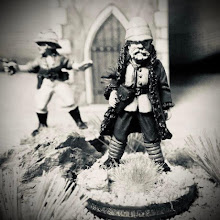Kim (Kimball O'Hara) is the orphaned son of an Irish soldier (Kimball O'Hara Sr., a former color sergeant and later an employee of an Indian railway company) and a poor Irish mother (a former nanny in a colonel's household) who have both died in poverty. Living a vagabond existence in India under British rule in the late 19th century, Kim earns his living by begging and running small errands on the streets of Lahore. He occasionally works for Mahbub Ali, a Pashtun horse trader who is one of the native operatives of the British Secret Service. Kim is so immersed in the local culture that few realize he is a white child, although he carries a packet of documents from his father entrusted to him by an Indian woman who cared for him.
Kim befriends an aged Tibetan lama who is on a quest to free himself from the Wheel of Things by finding the legendary ″River of the Arrow″. Kim becomes his chela, or disciple, and accompanies him on his journey. On the way, Kim incidentally learns about parts of the Great Game and is recruited by Mahbub Ali to carry a message to the head of British intelligence in Umballa. Kim's trip with the lama along the Grand Trunk Road is the first great adventure in the novel.
Kim's real parentage comes to light, he attends school and is trained by various agents of the British Secret Service. He is trained in espionage with his cover as a surveyor. Other parts of this training are disguise and the careful study of Indian population, and the characteristic dress, behavior and "even how they spit" in order to go undercover or to discover those in disguise. Throughout his years at school, Kim remains in contact with the holy man he has come to love. After three years of schooling, Kim is given a government appointment so that he can begin to participate in the Great Game . . .
The figure for Kim is another conversion I did using primarily parts and accessories from the hard plastic Perry Miniatures Afghan Tribesmen and represents Kim when he is 16 or 17 years old. The body, head and arms are from the Afghan Tribesmen box. The bedroll is from GW's hard plastic Pistoliers while the side pouch and "ghost knife" are from the Gripping Beast hard plastic Viking Hirdmen. The strap for the bedroll is just regular string that I stiffened with water down white glue. Here is the figure before painting and priming:
These suggested rules have not been play tested; but they definitely will in a game that takes place on the Northwest Frontier!
The Men Who Would be Kings: Needless to say, Kim can only be with a British Indian Field Force or one that is allied to the British. Add Kim with a unit, but do not count him toward any combat or morale checks. Because he is Kim(!) if there are any casualties, it takes 2 double "1's" to remove Kim from the battle. If he is the last figure, he escapes due to his training, knowledge of the terrain and ability to blend in!
1. He knows where they are! Kim has already scouted the area: All Hidden Units are no longer hidden or can Go to Ground; +2 points.
2. He knows the Way! (Must be with an Infantry unit and applies to only that unit): Not slowed by Difficult Ground; +1 point.
3. Kim has the Secret Plans! If Kim is killed or the unit is removed from play, your opponent gains 1 victory point; if Kim survives, you gain 1 victory point. No cost in points and again does not count as a model in the unit for combat or morale purposes.
In Her Majesty's Name (US Link and UK and EU link): He may join any British Army, British Indian Army, British Spy Organization, British Affiliated Adventuring Company, and British Affiliated Pashtun Adventuring Company.
Points: 80



































.JPG)































